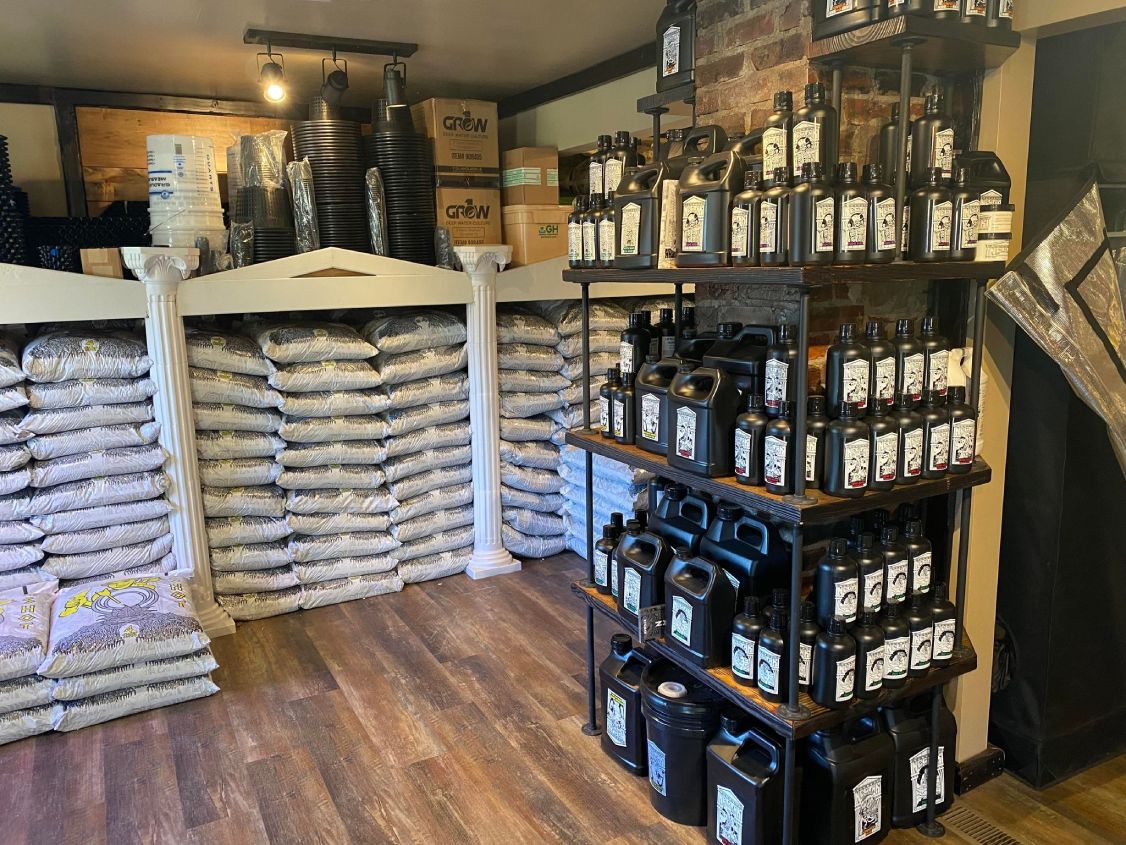Unleash Your Green Thumb: The Indoor Earthworm's Planting Process Demystified
Unleash Your Green Thumb: The Indoor Earthworm's Planting Process Demystified
Blog Article
Dive Into the Globe of Hydroponics: Discovering Numerous Types
Within the world of hydroponics exists a varied array of farming approaches that use special advantages for growing plants without dirt. As we get started on this exploration of different hydroponic systems, we will certainly discover the ins and outs of techniques like the Nutrient Film Method (NFT), Deep Water Culture (DWC), Wick System, Ebb and Flow (Flooding and Drain), and Aeroponics. Each method offers a distinctive strategy to supporting plants in a soil-less setting, promising development and efficiency in the world of contemporary farming.

The Nutrient Film Technique (NFT)
The Nutrient Film Technique (NFT) is a hydroponic system that entails a continuous circulation of nutrient solution over plant origins in a slim film to advertise efficient nutrient uptake. This method uses a shallow stream of water that has liquified nutrients, allowing the plant roots to have constant access to the required elements for development - The Indoor Earthworm. The nutrient solution flows along the bottom of the network, contacting the origins and afterwards draining pipes away, providing a highly oxygenated environment crucial for origin wellness
Considering that the nutrient service is recirculated, it requires much less water compared to traditional soil-based horticulture. Furthermore, the regulated environment of the NFT system reduces the threat of nutrient discrepancies and illness, leading to healthier plants.
Deep Water Culture (DWC)
In a DWC system, plants are put in net pots, permitting their origins to hang directly into a nutrient option. The trick to success in DWC is maintaining the appropriate oxygen degrees in the nutrient service to avoid root rot and advertise healthy plant growth.
One of the primary benefits of DWC is its low maintenance requirements. With fewer relocating components and no demand for a complex watering timetable, DWC is a beginner-friendly alternative for those new to hydroponic gardening. Furthermore, the direct accessibility to oxygen and nutrients allows plants to uptake what they need extra efficiently, typically causing faster growth rates and higher returns contrasted to typical soil growing approaches. Controlling water temperature and preventing algae growth in the nutrient service are vital factors to consider when implementing a DWC system.
Wick System
In hydroponic cultivation, the Wick System is a passive approach that makes it possible for plants to prepare nutrition service with capillary activity. This system is ideal and uncomplicated for newbies because of its simplicity. It contains a growing tray filled with an inert tool like perlite or vermiculite, where plants are positioned. A wick, usually made from products like cotton or nylon, prolongs from the expanding tray right into a reservoir filled with the nutrient option. The capillary action of the wick permits the nutrient service to move from the reservoir to the expanding tray, making certain a continuous supply of nutrients to the plants' origins. Among the advantages of the Wick System is its inexpensive and ease of configuration. It may not be appropriate for bigger plants or those with high nutrient needs, as the easy nature of the system can lead to uneven nutrient distribution. In general, the Wick System uses a easy and effective method to practice hydroponic horticulture.
Ebb and Circulation (Flooding and Drainpipe)
Exploring the Ebb and Circulation (Flood and Drain) system supplies understanding right into a vibrant hydroponic method that alternates between flooding and draining the read what he said plant origins with nutrient remedy. This system operates by regularly flooding the plant containers with a nutrient remedy from a tank and after that allowing the excess solution to drain back. The process is commonly managed by a timer to make certain regular flooding cycles, supplying the origins with oxygen as the solution recedes.
Ups and downs systems are versatile and can fit different plant sizes and types. They offer a good balance of water retention and aeration, advertising healthy and balanced root advancement. The regular flooding assists provide nutrients directly to the roots, enhancing nutrient uptake performance. Additionally, the ups and downs action protects against water torpidity, decreasing the risk of root rot and various Get More Information other water-related problems.
This approach is popular amongst hydroponic enthusiasts for its simpleness, performance, and adaptability to different plant demands. With correct monitoring and upkeep, the Ups and downs system can support robust plant development in a controlled hydroponic atmosphere.
Aeroponics
Making use of a high-pressure misting system, Aeroponics is an advanced hydroponic technique that puts on hold plant origins in an oxygen-rich environment to advertise optimal nutrient absorption and vigorous development. Unlike various other hydroponic strategies, which immerse origins in water or a nutrient solution, Aeroponics provides nutrients directly to the origins via a great mist. This haze is splashed at normal periods, making sure that the roots receive a constant supply of water, oxygen, and nutrients.

One of the key advantages of Aeroponics is its capacity to make the most of nutrient uptake while reducing water usage. By supplying nutrients directly to the roots, plants can absorb them a lot more efficiently, leading to faster development rates and greater yields. Furthermore, the oxygen-rich setting created by the misting system boosts root advancement and aids prevent root illness.
Aeroponics is especially appropriate for growing leafed eco-friendlies, herbs, and other plants that flourish in aerated settings. The Indoor Earthworm. Its effective use sources and capability to advertise quick growth make it a popular choice for hydroponic lovers aiming to achieve optimal results
Verdict
In verdict, hydroponics offers a variety of innovative techniques for expanding plants without dirt. From the nutrient film method to deep water culture, each technique has its own benefits and obstacles. By comprehending and making use of these various kinds of hydroponic systems, individuals can discover brand-new possibilities for sustainable agriculture and make the most of plant growth in controlled atmospheres.

Report this page